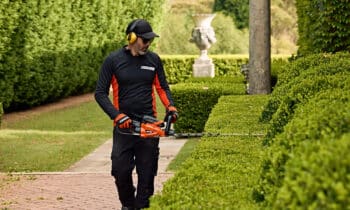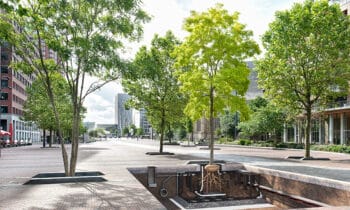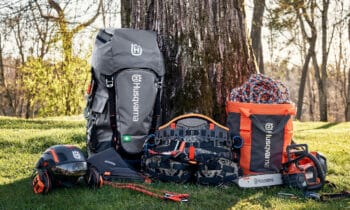
Proper greenhouse provides substantial labor savings
Getting as close as possible to the outdoor climate. That was one of the priorities Lode De Waele set some eight years ago, when he had a new greenhouse built at the then new location of his nursery De Waele Wilwoodii in Lochristi. Vermako offered the appropriate answer, and as a result will soon be allowed to build another three acres.
Lode De Waele represents the fourth generation of nurserymen in his family. That the nursery, which was founded in 1927 under the name De Waele & Ackerman, goes through life nearly a hundred years later as De Waele Wilwoodii is no coincidence. In fact, the company specializes in growing conifers in small pot sizes, and the Cupressus Macrocarpa Goldcrest Wilma and the Chamaecyparis Lawsoniana Elwoodii in particular. In addition, Azaleas, Camellias, Rhododendrons and Pieris are also grown in the greenhouses and container fields in Lochristi. Not unimportantly, this is done with MPS-SQ, Global Gap and GRASP certificates in our pocket, among others.

Simple yet robust structure
When nursery De Waele Wilwoodii moved to the grounds in Lochristi in 2012, the first step was to build an additional greenhouse for the Camelia and Goldcrest Wilma. Relatively quickly, the choice fell on a double-walled foil greenhouse from Vermako.
Among the determining factors for that choice, De Waele puts forward simplicity and reliability, among other things. "We are growers; not 'mechanics,'" he argues. "We don't want to have to sacrifice unnecessary time for maintenance or repairs to our greenhouse. Simple structure and mechanics were, in other words, of great importance. The fact that you can achieve high insulation values with a double foil even without a screen cloth - comparable to those of a glass conservatory with a screen cloth - is in that respect, for example, an enormous added value. In addition, the design of the structure also plays a certain role. Indeed, by working with a gothic arch, Vermako avoids problems due to snow pressure, for example."

Approaching the outdoor climate
Most decisive in the choice of Vermako's Semi Ventilation 12.80 greenhouse that was eventually installed, however, were the indoor conditions. "We work with a culture that is an outdoor plant rather than an indoor plant," says De Waele. "Then you have bitter little use for a greenhouse with a sweltering indoor climate. In our greenhouse, however, thanks to the foil, we enjoy beautiful diffused light, good for compact growth, and exceptional ventilation. In fact, we can open one side by 1.80 meters per truss. In other words, it's almost like a convertible greenhouse. Additionally, one side wall can also be opened, for even better air circulation."

Increased efficiency
According to De Waele, the fact that the conditions in the foil greenhouse also allow outdoor plants to be fully grown indoors means a huge efficiency gain for the nursery. "This way we avoid two time-consuming activities: placing the young plants outside and bringing them back inside afterwards. If you look at that across the board, and take into account not only the time but also the costs and risks involved, investing in a new greenhouse turns out to be the smarter option in our case. Hence, we already had Vermako expand the greenhouse by one hectare in 2017, and another three hectares will be added in 2021. This will further expand our production capacity and efficiency."




